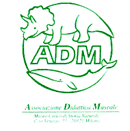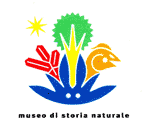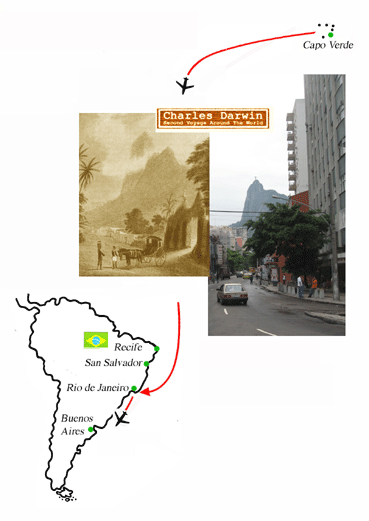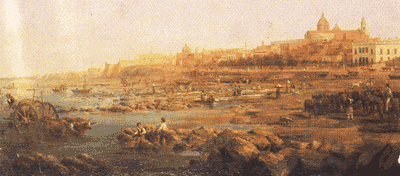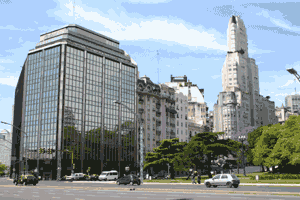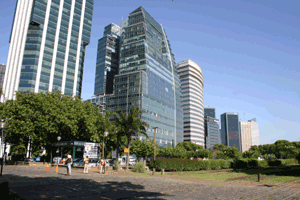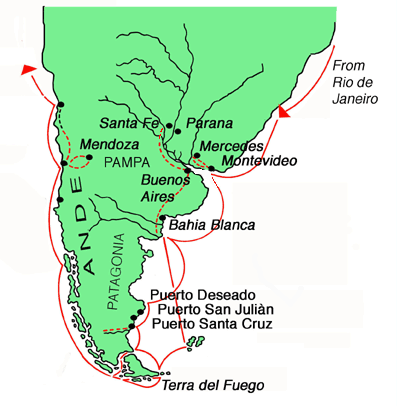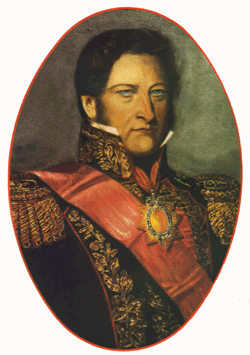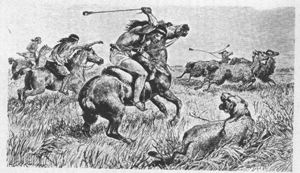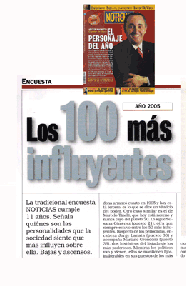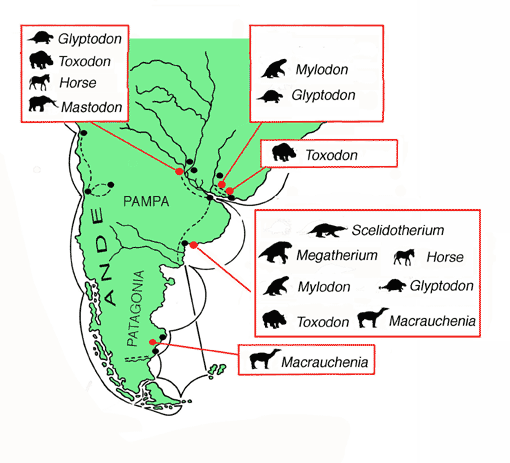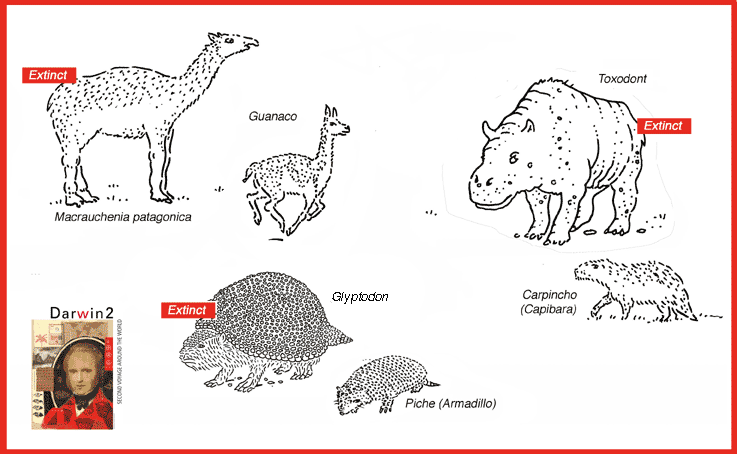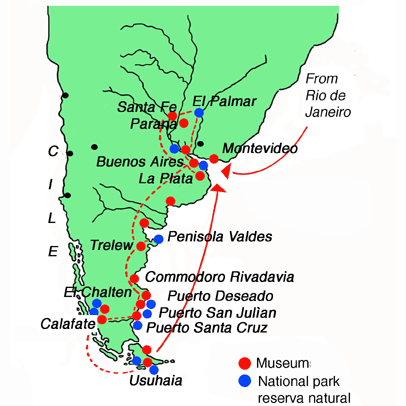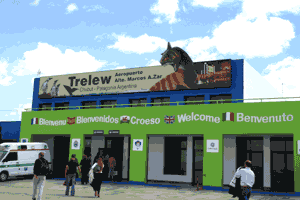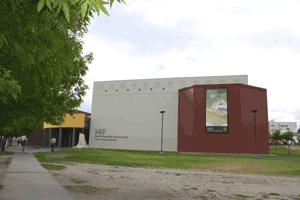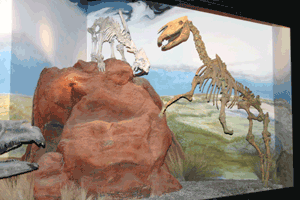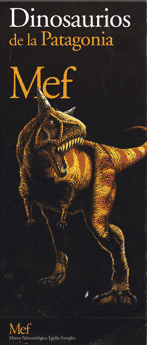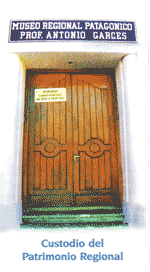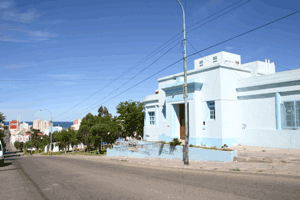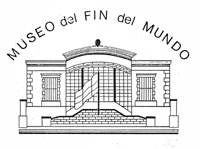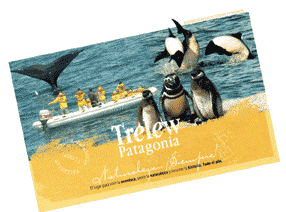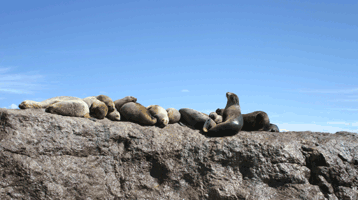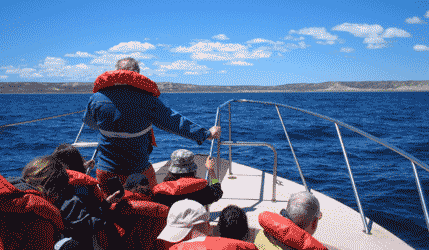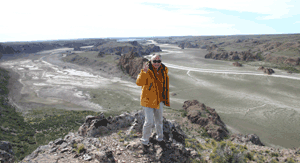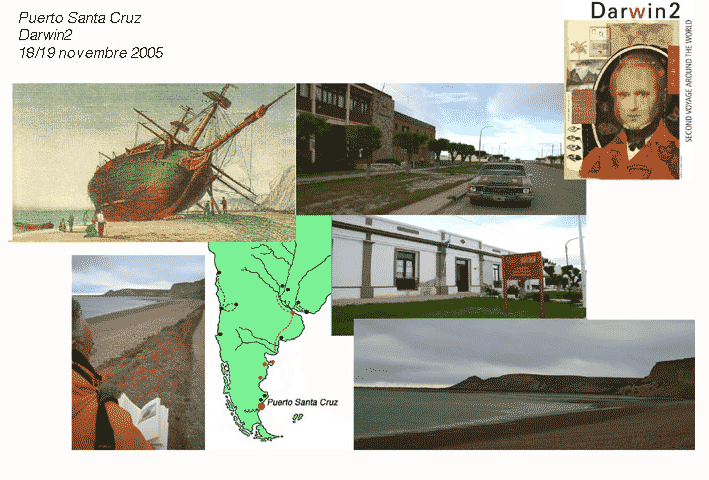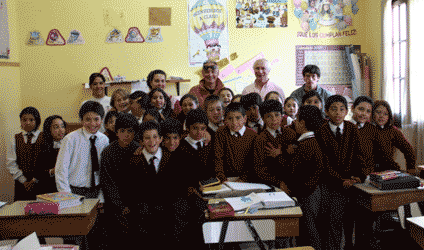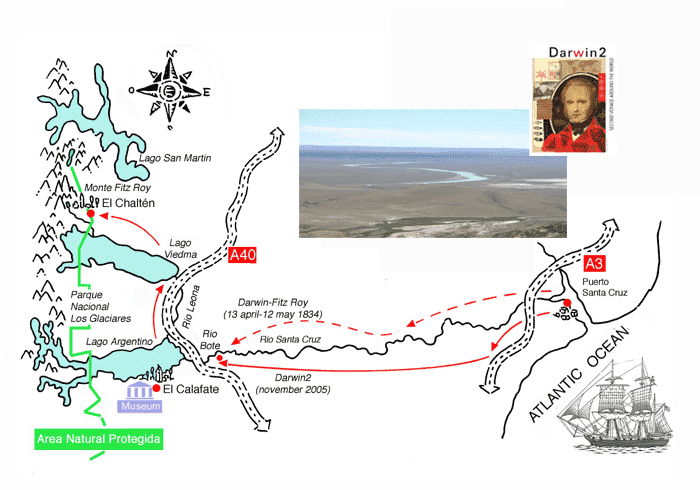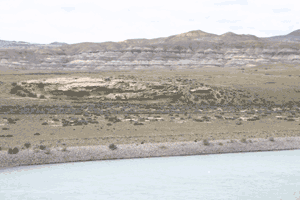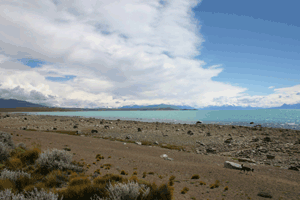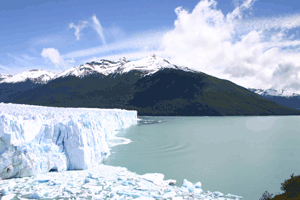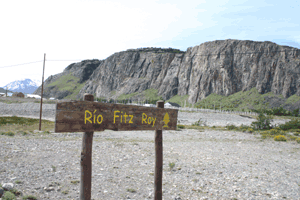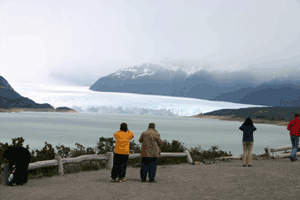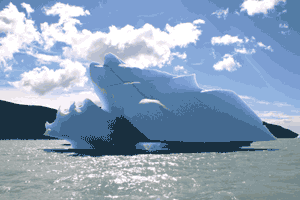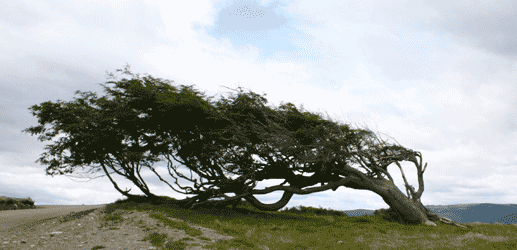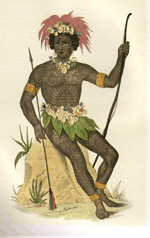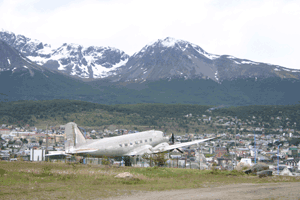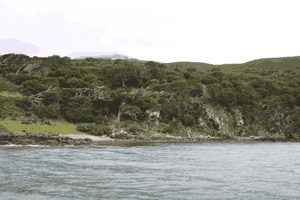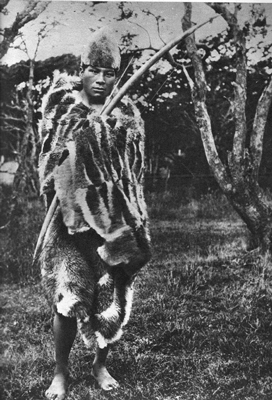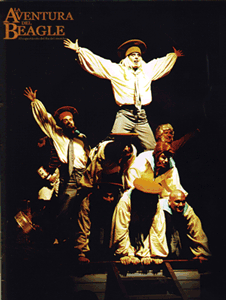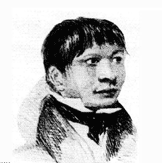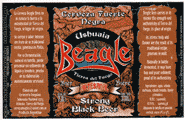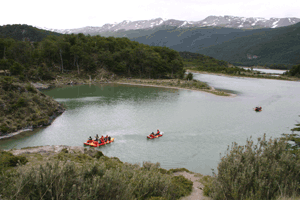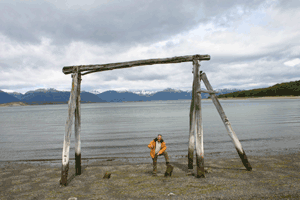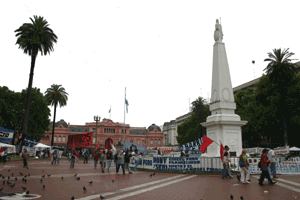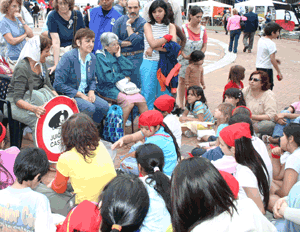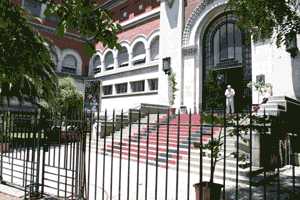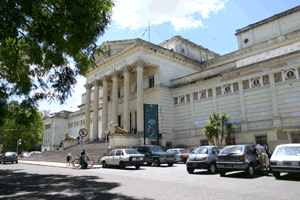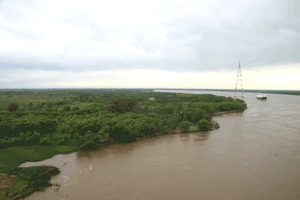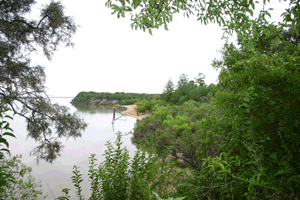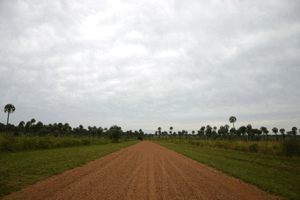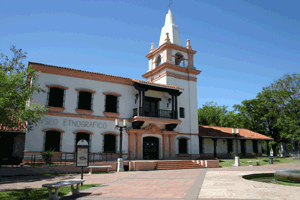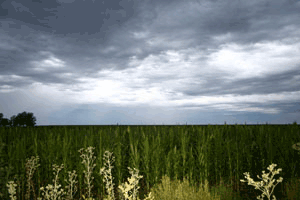
Charlese Darwin/Second Voyage Around the World (2005-2007)
"Everyone has heard of the beauty of the scenery near Botofogo. The house in which I lived was seated close beneath the well-known mountain of the Corcovado. It has been remarked, with much truth, that abruptly conical hills are characteristic of the formation which Humboldt designates as gneiss-granite. Nothing can be more striking than the effect of these huge rounded masses of naked rock rising out of the most luxuriant vegetation". Charles Darwin In Rio De Janeiro ( 1832)
*Corcovado's Picture by Augustus Earle (1832) and Photo By Paolo Savonuzzi, Darwin2 (December 2005)
English 1. Buenos Aires
This was Buenos Aires in 1831 (oléo by Richard Adams). Charles Darwin saw the capital for the first time one year later and because of its layout he called it "the most regular town in the world " .Landing at the Ezeiza International Airport on Sunday, November 13, 2005 Buenos Aires appears as shown in this pictures :
2. Darwin's First Time Darwin arrived in Montevideo on Rio de la Plata on July 26,1832. on the brigantine Beagle. But he saw Buenos Aires only on September 20 when he arrived having travelled on horse-.back from Bahia Blanca in the South,
Darwin then reached, always by the same means, also Santa Fè; such a distance can be covered today in a few hours driving on a motorway. During his trip from Bahia Blanca to Buenos Aires Charles Darwin made the acquaintance of General Juan Manuel Rosas, who was at that time the most powerful person in Argentina.
Rosas was engaged in the war (of extermination) against the Indians, who were still trying to stop white settlers.These are the four most important persons in today's Argentina according to an inquiry published by the weekly magazine "Noticias" (December 10, 2005) :
President Nestor Kirchner, the football player Diego Maradona, Cristina Kirchner &endash;the president's wife and …the U.S. President George W. Bush. During his first journey Darwin found an independent but unsettled country with an immense border which had still to be discovered. During this second voyage he finds a country leaving behind the long non democratic period during the Eighties, but where great poverty and enormous richness coexist. Argentina is still a country utilizing only a small part of its natural and human resources. 3. Darwin's Fossils Between 1833 and 1835 Darwin discovered in Argentina and Uruguay finds of big fossil mammals (including horses) which became extinct in relatively recent times. At the same time he observed that the species existing in South America are similar to those which have become extinct, but of a smaller size
This observation already contained a hint of evolution.
Many questions remained unanswered : what caused the contemporaneous extinction of the big mammals in the whole American continent and almost everywhere on our planet? Was it due to a dramatic change of climate ? Did human beings contribute to this mass extinction ? 4. Darwin Museums Darwin's considerations urge us to visit with him the natural history museums where the fossil finds of extinguished creatures are preserved. At the same time we'll list and visit the national parks and the protected areas where South America's native wildlife lives (or survives). The first museum we visit is the Trelew museum, which is advertised even at the airport.
Here we find a reconstruction of the American horse, of the sabre teeth tiger and of the toxodont. We also see the big dinosaurs which populated Patagonia in much more distant geological ages. During our way southward we stop at the small but extremely active ethnographic museum of Comodoro Rivadavia.
The Project includes visits and indication of all ethnographic and natural history museums which we'll encounter during the trip, in Puerto Deseado, Santa Cruz, Calafate, Rio Gallegos, Rio Grande and Ushuaia. Then, in the northern part of the country, in La Plata, Paranà, Santa Fè and Buenos Aires. 5. The National Parks and Provincial Reserves We meet the Patagonic wildlife in the Reserva Provincial of the Valdès peninsula.
There are many aquatic species, such as dolphins and austral whales, as well as terrestrial species, like guanacos and nandus. Reserves and national parks are becoming a considerable economical resource because they attract national and international tourists, According to the park-guards, in March there are a million of penguins gathered in Punta Tombo. In Puerto Pyramid, visitors of all ages can take part in an excursion by boat to watch the whales. Some are lucky enough to stroke them on their back encrusted with shells. Darwin smiles, at his time "naturaleza" was not shut up in reserves and the whales were slaughtered to obtain umbrella ribs and lighting oil. Puerto Madryn, on the Valdès peninsula, becomes in summer (from December 21st to March 21st) a very crowded seaside resort. The whales, together with their pups, have fortunately already left at that time. On the peninsula, 80 meters from the Ocean level and many kilometres far from the coast we find -like Darwin- a layer of giant oysters, which are now extinguished. 6 . Identification of the Darwin Sites According to the Project we identify the places described by Darwin during his journey on the Beagle and especially during his excursions on land. In particular, going southwards : Bahia Blanca, Carmen de Patagones, Puerto Deseado, Puerto San Julian and Puerto Santa Cruz. In some cases the pictures reproduced in his books are of help to us.
Elsewhere we find places where Darwin's visits have become part of the local tradition. It is the case of Puerto Deseado where children attending the primary school are taught the town's history and how to recognize the places where Darwin had been, (16th, 17th November , 2005, Puerto Deseado).
As to the Santa Cruz bay nothing seems having changed on the beach.
7. From the Atlantic Ocean to the Andes In accordance with the Project, from Puerto Santa Cruz we travel up the Rio Santa Cruz. Darwin did the same between April 18 and May 5, 1833 with Captain Fitz Roy and his crew. The stream was so strong that it was impossible for them to travel upstream either under sail or rowing.
Therefore, " three boats were bound together, prow against stern; two men remained on board, while the other ones hauled them from the river-bank". During days and days Darwin and the Beagle crew travelled up the desert Rio Santa Cruz valley, sunken in an endless desert plain.
The valley looks like a broad canyon. The "lion" colour of the ground and of the rocks prevails.The granite and basalt pebbles in the riverbed become larger and larger while approaching the Andes. Trees and bushes become very rare, dwarfed and stunted. 8. The water looks "milky" Darwin was surprised about this colour but he was unable to discover the reason of it. In fact, after 200 kilometres in the desert, Fitz Roy and his crew were forced to get back to the Atlantic coast. Travelling on an off-road vehicle, we cover the same distance in one day; we stop, cross the river where it is possible, take pictures and gather rock samples. We go beyond the place reached by the Fitz Roy expedition and after some ten kilometres there is such an extraordinary change in landscape which would have astonished Darwin too.
9. The Santa Cruz Springs If Darwin had been able to go beyond the village of Rio Bote he would have seen a big turquoise colour lake, the lake Argentino. Then, if hunger and his fear of the Indians had allowed him to cover further 80 kilometres, he would have had still a greater surprise encountering a big wooded valley and an immense glacier shattering into the lake: the Perito Moreno glacier. This would have been only the beginning of a series of surprises.
The Rio Santa Cruz flows out of the lake Argentino, which is fed by Rio La Leona, which, in its turn, flows out of the lake Viedma, which is fed by a torrent originating from a glacier on the slopes of one of the most inaccessible mountains of the Andes, the Fitz Roy peak.
The Rio Santa Cruz originates from the melted water of the small Torre glacier, just above the village of El Chalten.
Into the lake Argentino, the lake Viedma and the small lake Torre, from where the Rio Fitz Roy originates, flow a same number of glaciers. Above them there is a real sea of perpetual ice which covers a large part of the Andes.
Big and small white/lightblue icebergs break off continuously from these ice-rivers called "God's ploughs" by the Swiss expert of glaciers Agassiz. The rubbing of ice on the rocks produces mineral microparticles which remain in suspension in the water producing that "milky" colour noticed by Darwin. Also on the lake Argentino we find fossil sea shells almost 300 kilometres far from the Atlantic ocean coast and some 100 metres from the ocean level. Darwin regretted very much that he could not reach the Andes' slopes. We did it, for him too. 10. TIERRA DEL FUEGO Darwin saw the Tierra del Fuego the first time on December 17, 1832 ; the climate was very similar to what we found: mild temperature, sunshine (it s springtime), but also icy winds and unexpected storms.
We see the beech forests reaching the sea, but we meet neither the native Yamana nor the fire around which they gathered together. This ethnic group is extinguished, destroyed either by alcohol or directly by the whites. However their memory is still present everywhere.Instead, we find ski runs, oil plants ,an international port and a town that feels proud to be at the end of the world. Here in Ushuaia Darwin also finds a lot of things reminding him his first voyage. In a performance (The adventure of the Beagle), he is the leading character together with the Indian Jemmy Button, who was educated in England.
Restaurants, hotels and travel agencies are called after him and one can also drink a beer with the brand "Beagle".
In the national park we find the same landscape he described in his book but also natural equilibriums upset by invading plants and animals, such as the Canadian beavers, imported to make furs and which are now destroying the typical beech trees of Tierra del Fuego. We find less forests than Darwin recalled and we also notice that glaciers have moved back compared with photographs taken in the last century. 10. Back to Buenos Aires We go back to the capital where we find a warmer summer-climate. On December 7 and 8 we were present before the Casa Rosada to a demonstration of the "Madres de Plaza de Mayo". They request justice for the victims of the "dirty war" tearing apart Argentina around the Eighties, when thousands of young people and intellectuals disappeared for "reason of State".
The Darwin 2 Project goes on: Visit of the Natural History Museum of the Centenary Park where we can see a good reconstruction of extinguished big mammals found by Darwin and then classified by his colleague Owen.
Then we visit the Natural History Museum in La Plata about 50 kilometres to the South of the Capital.
Extraordinary finds of American dinosaurs of the most distant geological ages are preserved in this museum, as well as the big mammals which lived in the Pampa and in Patagonia during the last Ice Ages. We visit Tigre and Otamendi park, on the Paranà delta. A short visit of Montevideo with the hydrofoil connecting Montevideo and Buenos Aires. We discover that the beach studied by Darwin in Maldonado has now become the most exclusive resort of South America, Punta de l'Este., full of gardens and villas of the richest Brezilians and Argentinians of America. Excursion up to Concepcion del Uruguay and to the park El Palmar crossing the Paranà on two large hanging bridges and driving on the big motorway alongside the Uruguay river. El Palmar is one of the first national parks in Argentina situated between the Uruguay river and the town of Mercedes. Its quite difficult aim is to preserve not only the palms which existed in great quantities before the arrival of the whites, but also animals like the which was widespread at the time of Darwin's first voyage and now risks to become extinguished. 11. Crossing Mesopotamia from Conception to Paranà The land wedged between the Uruguay and Paranà rivers is the most fertile of Argentina and it is called Mesopotamia like the land between the Tigris and the Euphrates.
To reach Paranà from Conception de l'Uruguay we cross the Mesopotamia (the province of Entre Rios) on an asphalted road passing through some twenty big and small villages. We reach Paranà and its Natural History Museum., The tunnel bored under the river allows us to reach from Paranà the other bank, Santa Fè and its museums. In the Franciscan convent there is still the grave of a monk who had been killed by a jaguar which went into the church. This happened a few years before Darwin's first visit. He did himself hunt jaguars, being very careful. Now there is only the grave of a poor monk to remind their past existence.
11.The Banks of the Paranà River The plain of Santa Fè is lower than the plain where Paranà is situated. As observed by Darwin , the sediment strata are clearly visible and when following the river it is quite possible to find fossils similar to those found by Darwin.
We go back to Buenos Aires on the way Darwin had covered in the opposite direction to reach Santa Fè. The landscape is perfectly plain as it was at that time , but vegetation and wildlife are completely different. Instead of large fields of wild thistles with millions of cardoons we only see endless soya, sunflower, wheat, rice, oats, maize cultivations, making much use of gmo plants.
12. Note about Climate and Biodiversity
Darwin's observations written almost two centuries ago during and after his voyage, are undoubtedly useful to understand the logical passages which made him conceive his Theory of Evolution through Natural Selection. Furthermore they are useful to perceive the changes caused by human beings and nature. Less than two centuries mean only a second in the long history of Earth. Yet here European plants have completely colonized the Pampa and are extending themselves to Patagonia and Tierra del Fuego. The native mammals - with some few exceptions &endash; can be found only in the parks and protected areas. When the national parks were created , the native biodiversity was calculated to be reduced by 57%. A process for the exploitation of natural resources has started thanks to the creation of provincial parks. Large still uninhabited and wild areas could be suitable for the realization of economy and development initiatives, but at the present moment they run the risk of wild exploitation and consequent desertification. In the Southern hemisphere too there is an evident reduction of the glaciers, with only two exceptions : Perito Moreno and Pio XI. Some symptoms of climatic changes can be noticed here too: fog and rain in Patagonia, where normally rainfall doesn't reach 200 mm/year This is a only summary. More news on Luca Novelli books. *** Exceptional travelling companions during this step : Federico Canobbio Codelli (Centre of Scientific Culture Alessandro Volta) Francesco Balladore (photographer) Ingrid Gattermann (International Relations) *** Thanks to the Agency MBROS Viaggi, Milan, for logistics and to Patagonia Totale, in Trelew for their technical support. For the thermic windcheaters and clothes of Luca Novelli and Federico Canobbio Codelli : Cape Horn ----------------------------------------------------------- |

